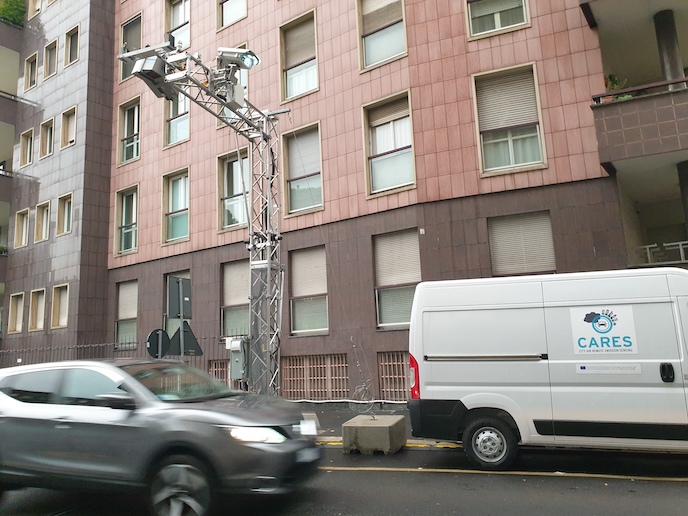Using remote sensing technology to measure vehicle emissions
In an ideal world, cars and trucks would be 100 % emission-free. But in reality, they aren’t. In fact, pollution from vehicles is frequently above legal limits. This impacts not only the climate, but also the health of millions of people, especially those living in urban areas. While laboratory-based emissions testing can help keep polluting vehicles off the road, they alone are not enough. What is needed is new technologies, such as remote emission sensing (RES). RES uses sensors and cameras to automatically measure exhaust emissions from vehicles in real-world operation. “Remote sensing is a proven technology that can provide unique insight into transportation’s true contributions to air pollution,” says Åke Sjödin(opens in new window), a transportation and mobility researcher at the Swedish Environmental Research Institute(opens in new window). While RES may be a proven technology, it is not widely used – due in large part to its need for highly skilled personnel and associated high costs. But this could soon change, thanks in part to the work being done by the EU-funded CARES(opens in new window) project. “Our aim is to reduce the hurdles for the practical application of remote emission sensing and to make it a widespread means for the monitoring and enforcement of vehicle emissions,” adds Sjödin, who served as the project coordinator.
Easy-to-implement RES solutions
To accomplish this goal, the project focused on developing a number of cost-effective RES solutions that can be easily implemented and used. This includes two new low-cost emission sensing point sampling sensors. Once these innovative sensors are installed along a roadside, they can be used to measure soot particles and particle number emissions. The project also advanced existing plume-chasing RES technology. “We created an automated solution that makes it possible for unskilled personnel to routinely carry out real-time roadworthiness testing at lower costs, and also incorporated the two low-cost sensors to better measure particulate matter emissions,” explains Sjödin.
Leveraging the power of data
In addition to developing new technologies, the CARES project built several tools for analysing the vast amounts of data captured by RES. According to Sjödin, the typical RES set-up will record thousands of samples every day. “This data can paint an accurate picture of vehicle emissions at a particular location,” he notes. “But multiply this data across many RES locations and you can construct a very detailed and instructive picture of how and where pollution is occurring.” To help make such a comprehensive picture possible, the CARES project developed a state-of-the-art, EU-wide RES database that allows users to interact and visualise aggregate data. There’s also openCARES, a software package that enables non-experts to analyse large sets of RES data and assists them in preparing measurement reports.
Identifying vehicles that fail to comply with emission standards
The project’s RES technology and data solutions were demonstrated in Milan, Krakow and Prague. In Prague, they successfully identified Euro 5 and Euro 6 heavy- and light-duty diesel trucks with malfunctioning or tampered emission control systems. Across all sites, the system observed that some Euro 6d-Temp and Euro 6d diesel vehicle families show high on-road NOx emissions – a good indicator that they may not comply with emission standards. “These demonstrations show that remote emission sensing can be used in the future for many applications related to air pollution measures and policies,” concludes Sjödin.







